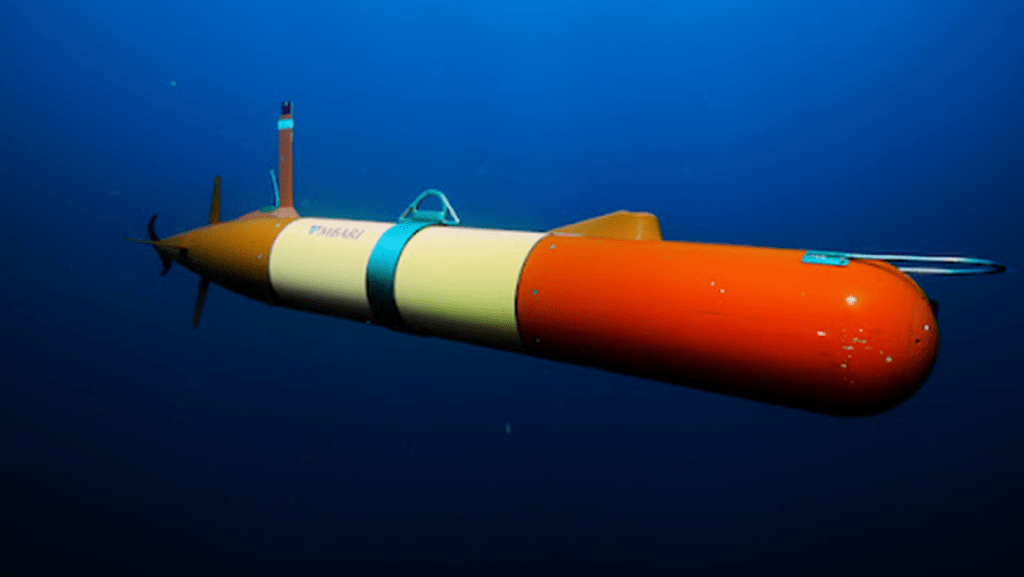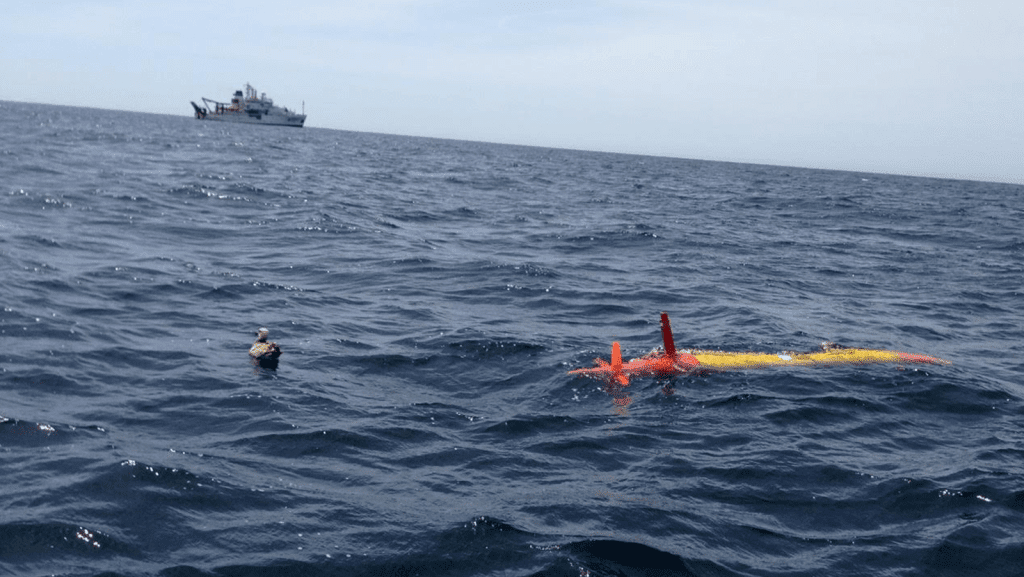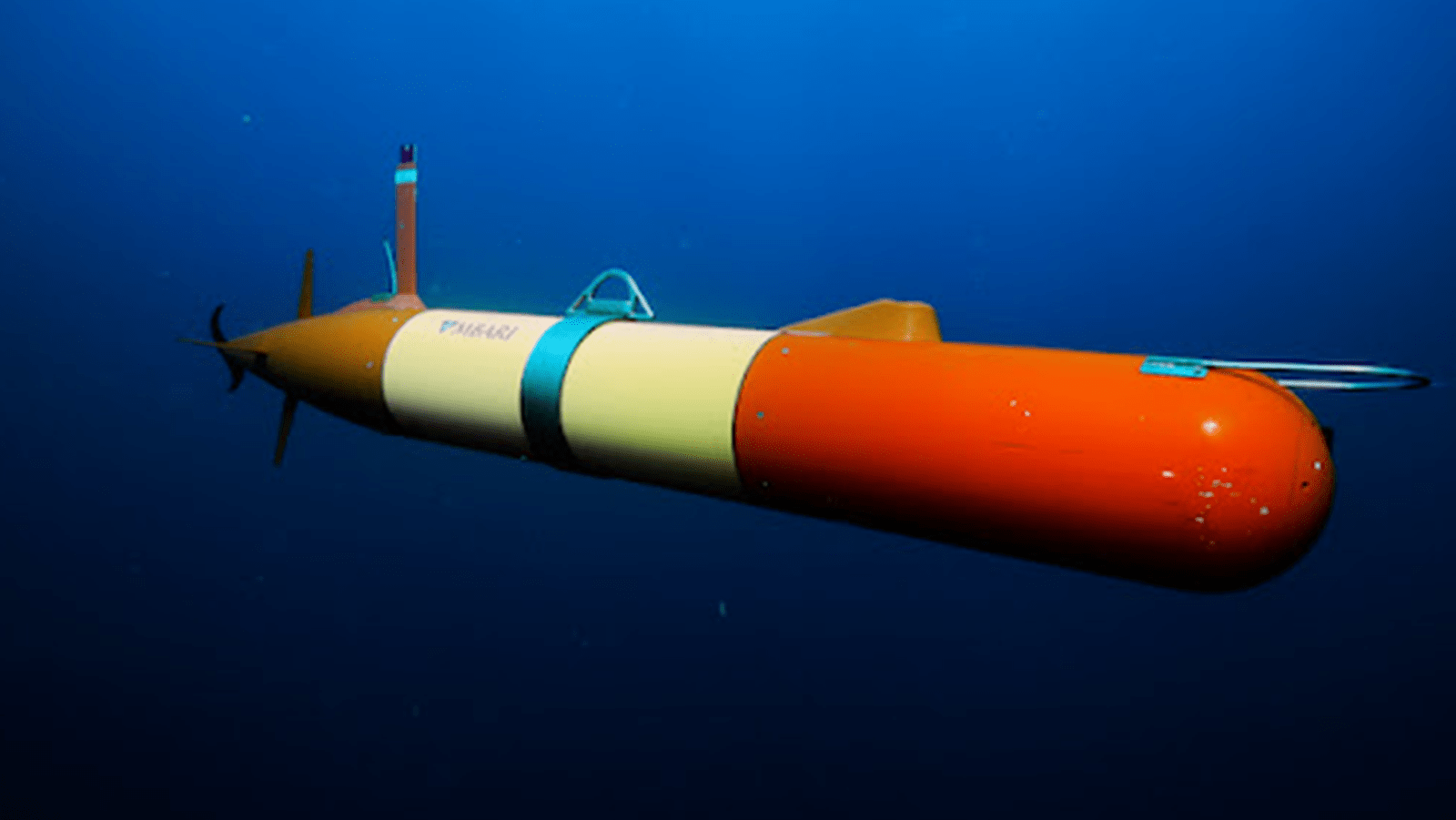Press release originally published at the Monterey Bay Aquarium Research Institute on May 19, 2022.
In a major step forward for monitoring the biodiversity of marine systems, a new study published in Environmental DNA details how Monterey Bay Aquarium Research Institute (MBARI) and NOAA’s Atlantic Oceanographic & Meteorological Laboratory (AOML) researchers are using autonomous underwater robots to sample environmental DNA (eDNA). eDNA allows scientists to detect the presence of aquatic species from the tiny bits of genetic material they leave behind. This DNA soup offers clues about biodiversity changes in sensitive areas, the presence of rare or endangered species, and the spread of invasive species—all critical to understanding, promoting, and maintaining a healthy ocean.

For the study, researchers combined two novel autonomous platforms developed by MBARI: the long-range autonomous underwater vehicle (LRAUV) and the Environmental Sample Processor (ESP). The LRAUV is a nimble robot that can travel to remote areas of the ocean for extended periods of time. The ESP is a robotic “laboratory-in-a-can” that filters seawater and preserves eDNA for future study. By equipping an LRAUV with ESP technology, researchers can expand the scale of ocean monitoring over time and space. By comparison, traditional sampling of eDNA in the ocean requires weeks on an expensive research vessel limited to a localized area. Technology innovations like this are revolutionizing ocean conservation efforts.
Marine biodiversity is a measure of the abundance of individuals and species in the ocean. This interconnected mosaic of organisms—from the smallest plankton to the largest whales—supports food webs, produces the air we breathe, and regulates our climate. Autonomous tools like the LRAUV and ESP enable researchers to maintain a persistent presence in the ocean and monitor changes in sensitive ecosystems in ways that were not possible previously.
“Organisms move as conditions change in our oceans and Great Lakes, affecting the people and economies that rely on those species. We need cheaper and more nimble approaches to monitor biodiversity on a large scale. This study provides the synergistic development of eDNA and uncrewed technologies we need, in direct response to priorities laid out in the NOAA ‘Omics Strategic Plan,” said Kelly Goodwin, a co-author on the study as well as a microbiologist at NOAA AOML, and the NOAA Research ‘Omics Lead.

For this research, MBARI, AOML, and the University of Washington collaborated to complete three expeditions in the Monterey Bay National Marine Sanctuary. The team coordinated sample collection between MBARI’s three research vessels, the NOAA Fisheries ship Reuben Lasker, and a fleet of MBARI’s LRAUVs.
A ship-based team lowered bottles to a specific depth to collect and preserve water samples. Meanwhile, an LRAUV equipped with an ESP autonomously sampled and preserved eDNA at similar locations and depths. The eDNA samples were returned to the lab for in-depth sequencing.
LRAUVs are able to travel for weeks at a time and for hundreds of kilometers. They can enable more frequent sampling in areas of interest than traditional research vessels, which typically only visit remote sites infrequently. Autonomous robots will allow researchers to study previously unsurveyed regions of the ocean. Filling in these data gaps is critical to strengthening global ocean health. Ship-based research will continue to play an important role in oceanographic studies, but adding new autonomous technology to the toolkit will expand capacity for research, monitoring, and resource management. Ultimately, MBARI researchers envision deploying a fleet of LRAUVs equipped with ESP technology.
Support for this research was provided by the David and Lucile Packard Foundation, NOAA/OAR/’Omics, NOAA/OAR/NOPP, and NASA Projects #80NSSC20M0001 and 80NSSX21M003.
Original journal article:
Truelove, N.K., N.V. Patin, M. Min, K.J. Pitz, C.M. Preston, K.M. Yamahara, Y. Zhang, B. Raanan, B. Kieft, B. Hobson, L.R. Thompson, K.D. Goodwin, and F.P. Chavez (2022). Expanding the temporal and spatial scales of environmental DNA research with autonomous sampling. Environmental DNA. doi.org/10.1002/edn3.299
